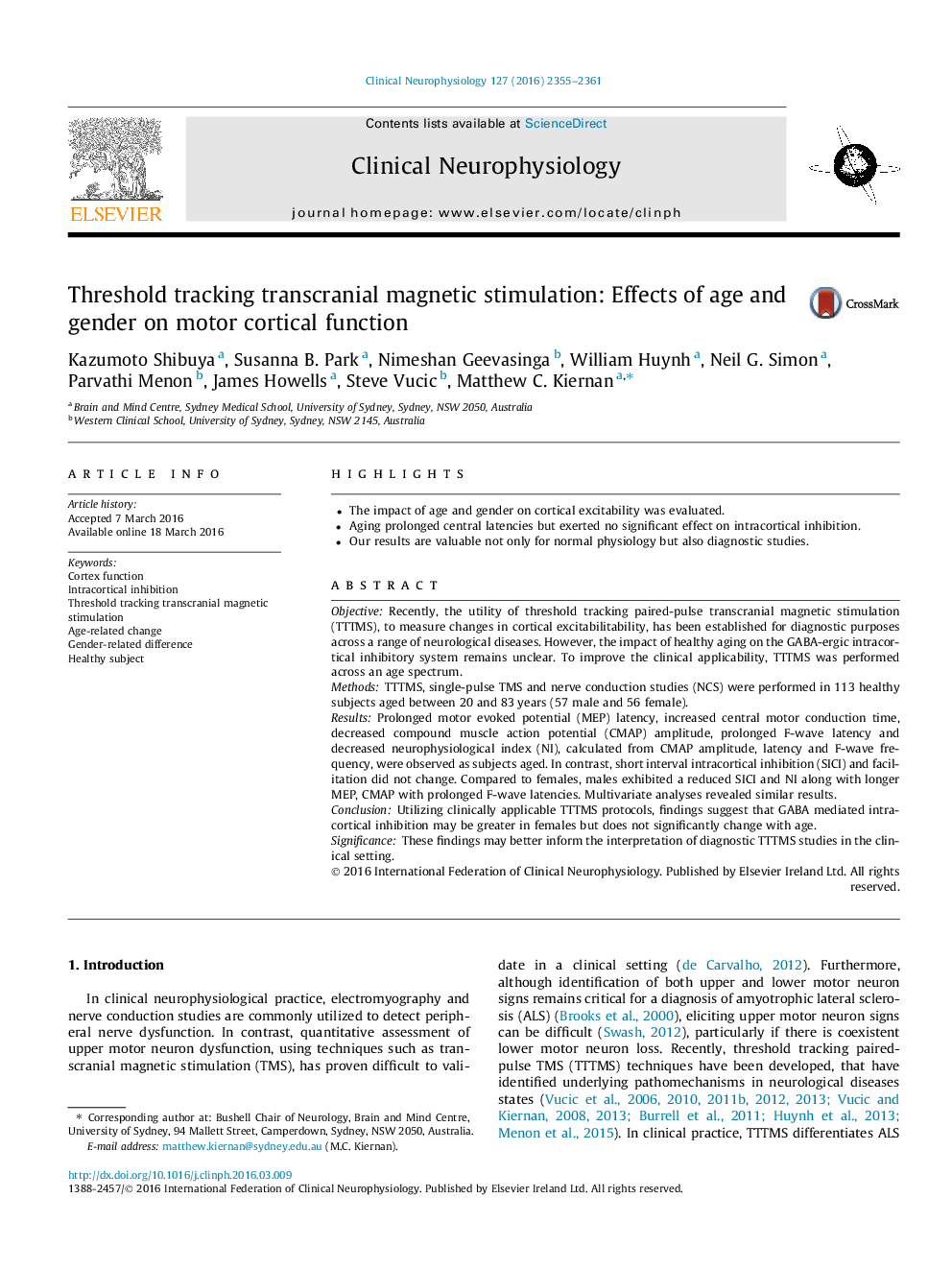| Article ID | Journal | Published Year | Pages | File Type |
|---|---|---|---|---|
| 3042763 | Clinical Neurophysiology | 2016 | 7 Pages |
•The impact of age and gender on cortical excitability was evaluated.•Aging prolonged central latencies but exerted no significant effect on intracortical inhibition.•Our results are valuable not only for normal physiology but also diagnostic studies.
ObjectiveRecently, the utility of threshold tracking paired-pulse transcranial magnetic stimulation (TTTMS), to measure changes in cortical excitabilitability, has been established for diagnostic purposes across a range of neurological diseases. However, the impact of healthy aging on the GABA-ergic intracortical inhibitory system remains unclear. To improve the clinical applicability, TTTMS was performed across an age spectrum.MethodsTTTMS, single-pulse TMS and nerve conduction studies (NCS) were performed in 113 healthy subjects aged between 20 and 83 years (57 male and 56 female).ResultsProlonged motor evoked potential (MEP) latency, increased central motor conduction time, decreased compound muscle action potential (CMAP) amplitude, prolonged F-wave latency and decreased neurophysiological index (NI), calculated from CMAP amplitude, latency and F-wave frequency, were observed as subjects aged. In contrast, short interval intracortical inhibition (SICI) and facilitation did not change. Compared to females, males exhibited a reduced SICI and NI along with longer MEP, CMAP with prolonged F-wave latencies. Multivariate analyses revealed similar results.ConclusionUtilizing clinically applicable TTTMS protocols, findings suggest that GABA mediated intracortical inhibition may be greater in females but does not significantly change with age.SignificanceThese findings may better inform the interpretation of diagnostic TTTMS studies in the clinical setting.
